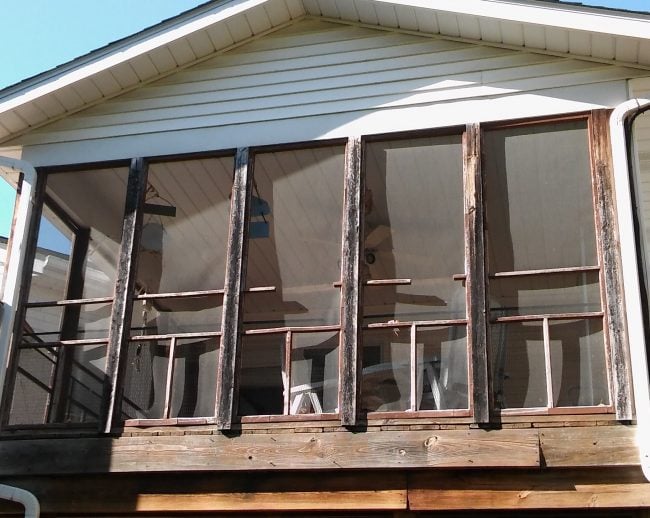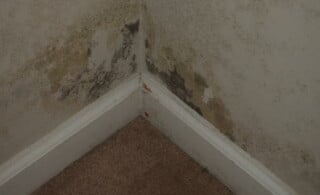
As long as you plan to tear things up in your home a bit, this is the ideal time to remove or treat any materials that are hazardous to your health. Environmental consultants are licensed professionals who have training in the detection and treatment of such problems.
Lead-based paint and asbestos are the most common hazards, so they are the ones we’ll focus on here. But the process of assessing and treating other unhealthy conditions, like mold or mildew, will be about the same.
Whether or not you include hazardous materials treatment work in your contract, I strongly urge you to sample all surfaces after the renovation is completed, and get a clearance report stating that your property is safe before you return it to normal use.
1. Research government regulations regarding environmental hazards
To find out which hazards might typically be discovered in a building like yours, call your state Department of Health and Human Services, ask for the epidemiologist, who will information about the effect of environmental hazards on human beings. They can provide pamphlets and sound, scientific advice about every kind of hazard that you might be concerned about.
The pamphlets will contain information about the hazardous material, why and under what conditions it is a hazard, what symptoms you might exhibit if you’ve been exposed to this hazard, and how to treat the materials in place or how to remove them so that you will have eliminated the problem.
Briefly describe your building, your neighborhood, and your plans for renovation. Find out what they think you ought to test for, based on what they have typically found in properties like yours.
2. Hire an environmental consultant to assess the risks
Environmental consultants are required to be licensed or certified under both federal and state laws. They must have extensive and ongoing training in identifying and treating hazards of all kinds. The experienced consultants have been supervising remediation projects long enough to know what treatment methods work. That information will make them worth their fee to you.
As a result of years of field studies and scientific and medical research, the federal government agencies that regulate these toxic materials know which levels of exposure require action on your part, how to take that action and how to treat currently non-hazardous toxic materials so that they won’t become hazards in the future. This is the kind of information your environmental consultant should be providing to you.
A licensed environmental consultant should be able to visually identify potential hazards, sample the materials they think are suspicious and get those samples to a properly licensed laboratory, translate the lab results into a report written in plain English, and provide you with a scope of work and some pricing estimates for the remediation (treatment or removal) of any hazards.
It will be important that your environmental consultant knows which areas of your building you plan to disturb during the renovation.
3. Remove all environmentally hazardous materials
Save the environmental consultant’s report. Incorporate their suggestions into your renovation plan. Have any hazardous materials treated or removed when you renovate. Your environmental consultant should be able to coordinate this for you.
Later, when the remediation work is finished, ask the consultant to return to your property and test it again. The purpose of this test is to confirm that there are no hazards left. The resulting report is called a clearance report.
If you are renovating an income-producing property, you will want to notify your tenants of your work plan and relocate them during the work period. Share the results of your clearance test with them, so that they feel safe when they return. If you are working on your own home, you will be required by law to leave the property during the remediation work period.
4. Keep records of everything
Due to the liability issues involved in handling toxic materials, I suggest you make notes of all telephone conversations, and keep copies of all brochures, correspondence, lab results, risk assessments, remediation plans, contracts, and clearance reports, and keep all documents in your ENVIRONMENTAL HAZARDS file.
Keep the lab reports and the consultant’s reports forever. There is now a federal law that requires that when you sell your property you disclose whether or not you know of any hazardous conditions. If your property is hazard-free and you can prove it, you may be able to sell for a higher price.
In addition, as more and more landlords are faced with lawsuits brought by families with permanently disabled children, insurance companies are beginning to require that you prove you have a hazard-free rental unit before they’ll renew your liability insurance on that property. Your clearance report will provide the documentation you’ll need to lower those liability premiums.
Have your property sampled and cleared at the end of the job whether or not you included abatement work in your contract. You never know what you’ve stirred up, a clean bill of health will bring you peace of mind, and your insurance premiums may even go down.
 Lead Paint Common Sense
Lead Paint Common Sense  How Do I Get Rid of the Moldy Odor in My Basement?
How Do I Get Rid of the Moldy Odor in My Basement?  How to Remediate Mold
How to Remediate Mold  Understanding Toxic Black Mold
Understanding Toxic Black Mold  Guide to Room-by-Room Repairs for Easy Accessibility for Disabled Loved Ones
Guide to Room-by-Room Repairs for Easy Accessibility for Disabled Loved Ones 

Are You Familiar With This Topic? Share Your Experience.